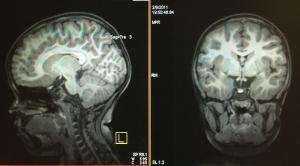Critical regions of the brain are smaller in children from poor families

Families in Hawai`i contributed to research out today that is insightful and heartbreaking.
Brain scans of children and adolescents here and on the U.S. mainland show that, in poorer families, children's brains are less developed than those of children from wealthier families. The less-developed areas include those important for language, reading and spatial skills. The study found that those with lower income had smaller brain surfaces and poorer cognitive performance, independent of race or ethnicity.
University of Hawai`i physician-scientist Linda Chang and MR Physicist Thomas Ernst of the John A. Burns School of Medicine (JABSOM) joined investigators at the University of California-San Diego to lead the study at nine U.S. research centers, where researchers collected brain scans, computerized cognitive assessments and genetic data from more than 1,400 children, ages three to 20. In Hawai`i, scans of 256 children and adolescents were taken using an MRI scanner at The Queen's Medical Center dedicated to JABSOM research.
"We are grateful to the children and their families who participated in this study," said Dr. Chang. "The data will continue to allow many researchers across the United States and the world to address many questions related to brain development."
Also important was a finding that even small differences in income could lead to improvement. "Among children from low-income families, small differences (increments) in income could lead to larger brain surfaces," Dr. Chang said. Larger brain surfaces indicate better development in brains that can also be influenced by nutrition, interaction, and engaging children in language, reading and play.

"One conclusion from the study could be that policies related to reducing poverty may have meaningful effects on children's brain functioning and cognitive development," Dr. Chang said.
Without intervention, the cost to society could be significant. 2013 U.S. Census Data shows nearly 13% of children in Hawai'i live in poverty. Those with lessened brain development could become adults less qualified for the workforce, or plagued by even more troubling problems.
The research is reported online today in the Nature Neuroscience journal.
More information:
medicalxpress.com/news/2015-03 … -brain-children.html
Provided by University of Hawaii at Manoa